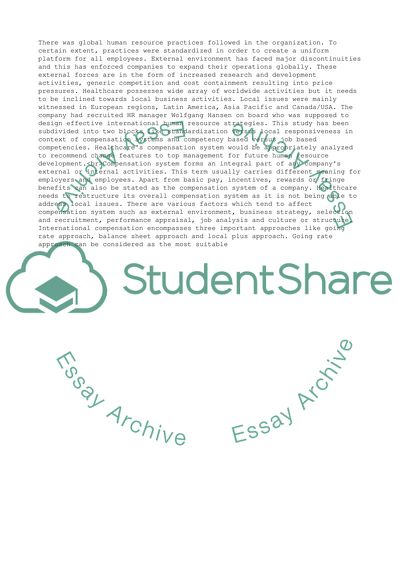Cite this document
(Questions Block A: Standardization vs local responsiveness of Essay, n.d.)
Questions Block A: Standardization vs local responsiveness of Essay. https://studentshare.org/management/1862015-questions-block-a-standardization-vs-local-responsiveness-of-compensation-systems-1-should-wolfgang-move-some-of-the-existing-pay-elements-across-the-t-account-in-figure-2-shifting-them-from-globally-standardized-to-locally-customized-2-should-he-ad
Questions Block A: Standardization vs local responsiveness of Essay. https://studentshare.org/management/1862015-questions-block-a-standardization-vs-local-responsiveness-of-compensation-systems-1-should-wolfgang-move-some-of-the-existing-pay-elements-across-the-t-account-in-figure-2-shifting-them-from-globally-standardized-to-locally-customized-2-should-he-ad
(Questions Block A: Standardization Vs Local Responsiveness of Essay)
Questions Block A: Standardization Vs Local Responsiveness of Essay. https://studentshare.org/management/1862015-questions-block-a-standardization-vs-local-responsiveness-of-compensation-systems-1-should-wolfgang-move-some-of-the-existing-pay-elements-across-the-t-account-in-figure-2-shifting-them-from-globally-standardized-to-locally-customized-2-should-he-ad.
Questions Block A: Standardization Vs Local Responsiveness of Essay. https://studentshare.org/management/1862015-questions-block-a-standardization-vs-local-responsiveness-of-compensation-systems-1-should-wolfgang-move-some-of-the-existing-pay-elements-across-the-t-account-in-figure-2-shifting-them-from-globally-standardized-to-locally-customized-2-should-he-ad.
“Questions Block A: Standardization Vs Local Responsiveness of Essay”. https://studentshare.org/management/1862015-questions-block-a-standardization-vs-local-responsiveness-of-compensation-systems-1-should-wolfgang-move-some-of-the-existing-pay-elements-across-the-t-account-in-figure-2-shifting-them-from-globally-standardized-to-locally-customized-2-should-he-ad.


